Art Salon Chinatown presents
Milton Quon
June 9 – July 30, 2018
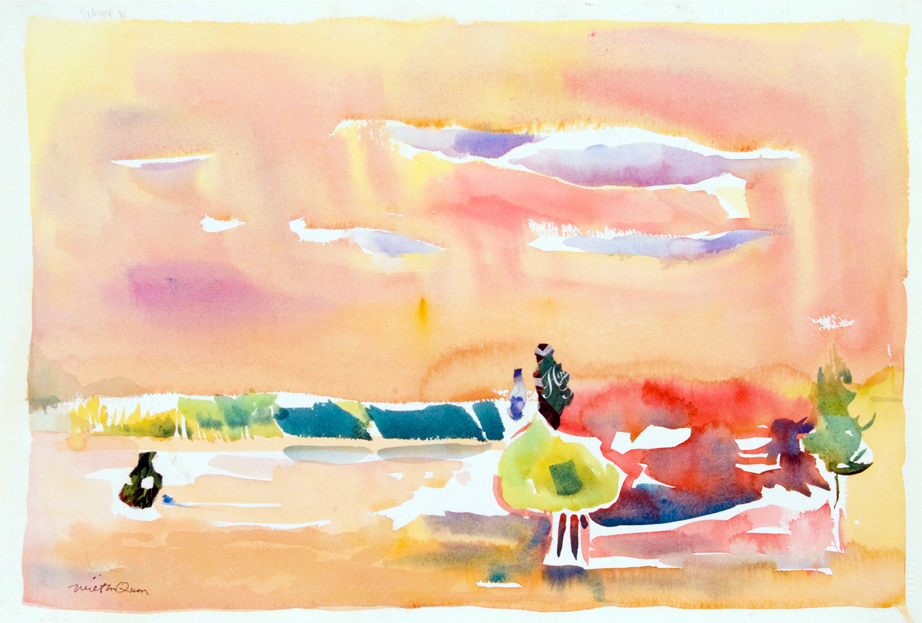

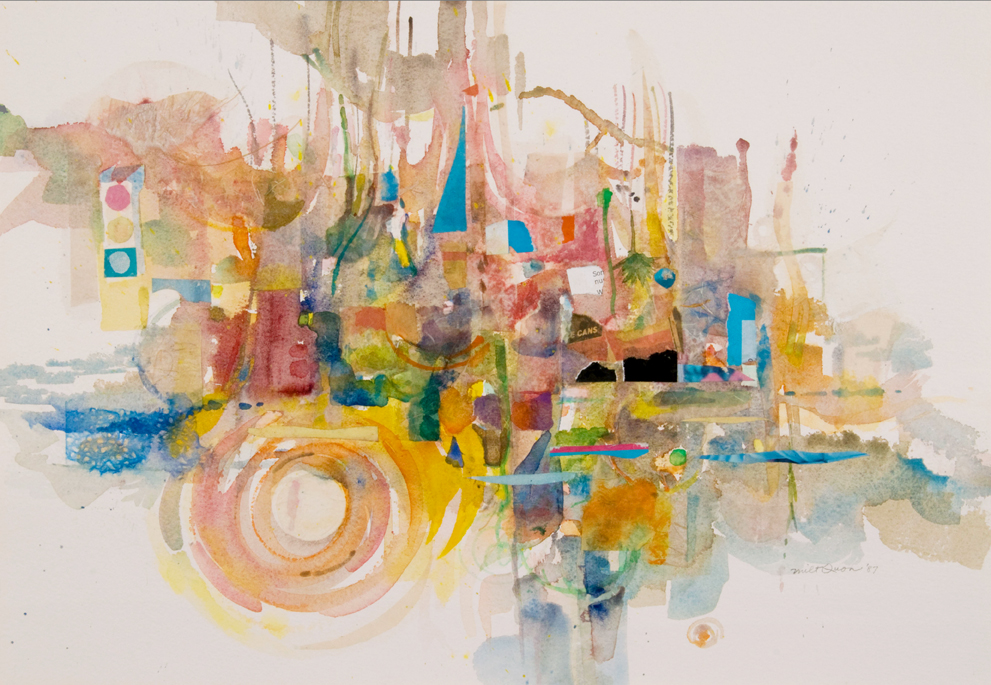

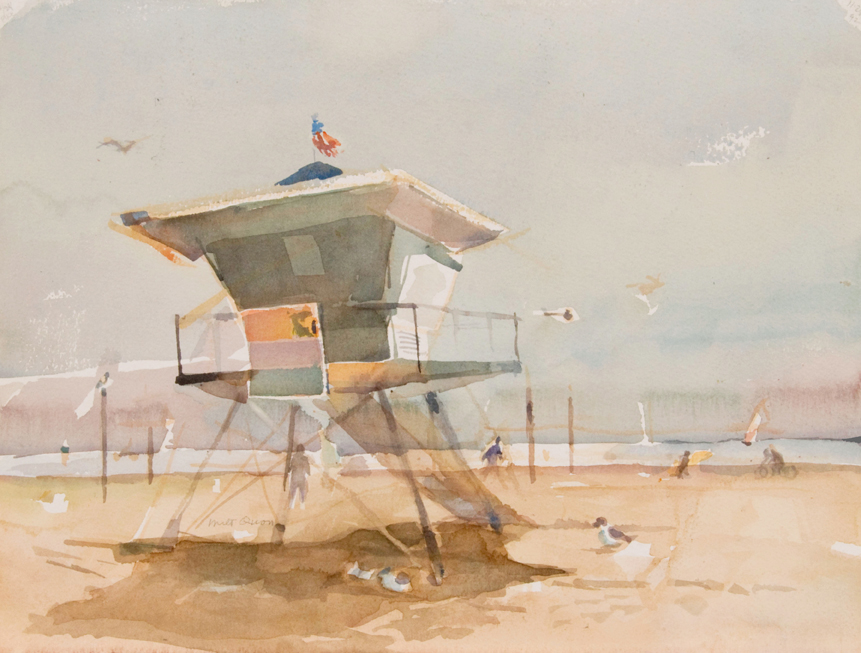

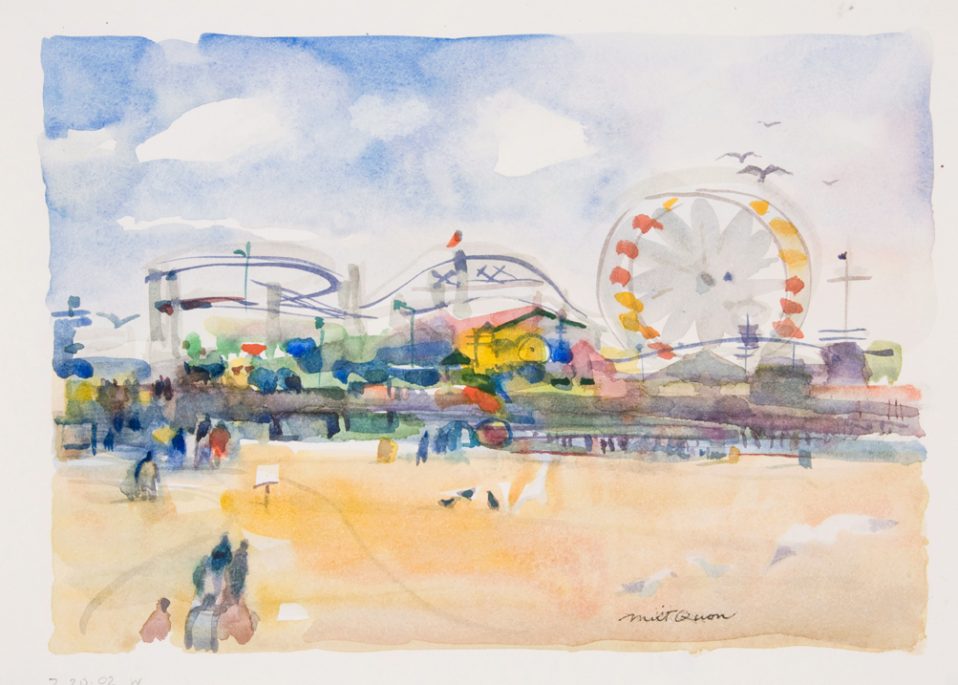



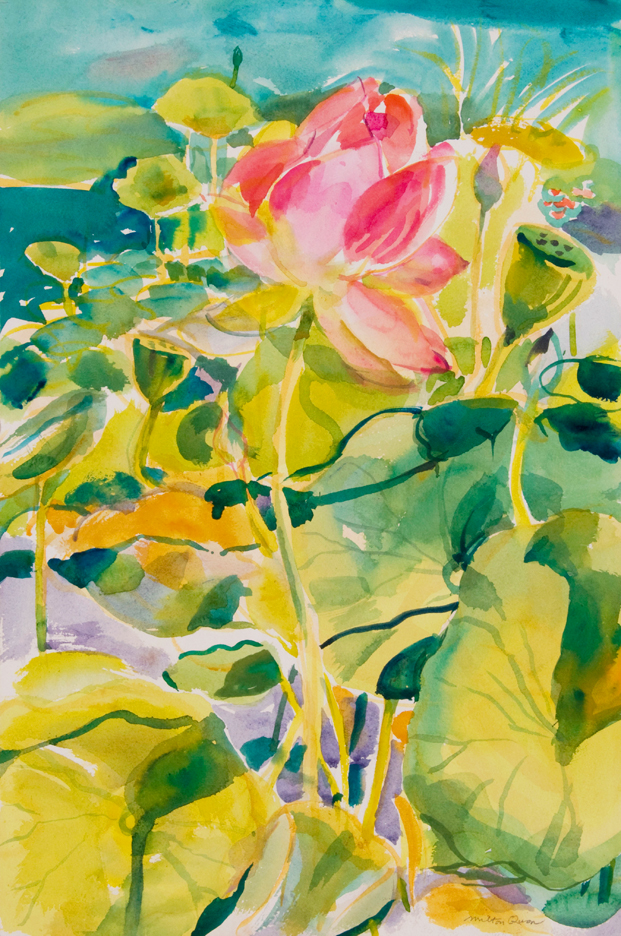

Milton Quon is a native of Los Angeles, born in 1913. As the eldest of eight children and the only son of the Ng Quan Ying family, he grew up near and worked at his father’s produce business in Market Chinatown, where the Los Angeles Produce Market is located in downtown.
Quon’s talent was apparent at a young age. When it came time for him to go to college and choose a career, Quon entered Frank Wiggins Trade School (what would become Los Angeles Trade-Tech College) and Los Angeles Junior College as an architecture major so that he could take art classes while preparing for a practical, lucrative profession. He soon switched his major to art and won Chouinard Art Institute’s summer scholarship in 1936–the first of many he would receive from the school that would later become the California Institute of the Arts.
Milton Quon’s professional career began with Walt Disney Studios in 1939, helping animate the films Fantasia and Dumbo. With the studio’s strike of 1941, Quon soon entered the world of freelance work, illustrating everything from advertisements for Douglas Aircraft missiles and Laura Scudder mayonnaise to restaurant menus and chopstick instructions for Chinatown’s own Man Jen Low, Soo Chow, and Grandview Gardens, among others. He returned to Disney after the war to create promotional art on projects and films, like Make Mine Music and Song of the South. He went on to become the first Chinese West Coast art director for the ad agency BBD&O, where he managed national accounts. Beyond normal business hours, Quon ran his own Mid-City Art Service, preparing illustrations, layouts, and presentation materials for clients. Quon also shared his creative talent as an instructor at Los Angeles Trade Tech College. As a commercial artist and art director, Quon drew on a broad artistic range that enabled him to fulfill the needs of his clients.
Later in his career and throughout his retirement, Quon continued his art education through informal means. He attended weekend watercolor workshops and classes and returned to painting for pleasure, especially on location, learning and bonding with other watercolor artists, such as Milford Zores, Dong Kingman, Robert E. Wood, and Henry Fukuhara. Quon also added to the thousands of sketches of his native Los Angeles by recording in great detail his recreational travels. An opulent Chinese opera, the symphony at Carnegie Hall, a young tree next to a secret fishing spot, and quotidien scenes were all sketched in haste and depicted in the same vein: with a balance of formal economy, composition geared for maximum impact, and a sensitivity to the most important details, such as mood and sensory information.
Quon rarely exhibited his art work prior to his retirement. Over the last two decades, he has had exhibitions and worked as a movie and television extra. After many years of making art for others, it is not surprising that sales of his works are not a priority for Quon with regard to his own fine art practice. He prefers to collect his paintings, much like his approach to sketchbooking. In May of 2005, Quon enjoyed his first major solo museum exhibition, Impressions: Milton Quon’s Los Angeles at the Chinese American Museum.
The works in the exhibition are but a small selection from Quon’s own extensive collection. His plein-air watercolors and sketchbooks, with their rich, intuitive colors and expressive lines, form the basis of Quon’s fine art practice. The artist’s oeuvre is replete with hometown glory: his pictures chronicle everyday life against the backdrop of Los Angeles’s changing natural and urban landscape.

Milton will celebrate his 105th birthday in August (2018).
Special thanks to Milton and his wife of more than 70 years, Peggy, and their four children, Michael, Jeffrey, Timothy, and Sherrill.
Excerpts of this text were drawn from the exhibition description of Impressions: Milton Quon’s Los Angeles and the main essay from the exhibition catalogue, entitled ‘Round the Clock: Chinese American Artists Working in Los Angeles, both of which were authored by this curator, Sonia Mak.